
Isabella of Angoulême was queen consort of England as the second wife of King John from 1200 until John's death in 1216. She was also suo jure Countess of Angoulême from 1202 until 1246.

Thomas Holland, 2nd Baron Holand, and jure uxoris1st Earl of Kent, KG was an English nobleman and military commander during the Hundred Years' War.
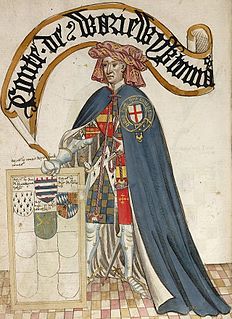
Thomas de Beauchamp, 11th Earl of Warwick, KG was an English nobleman and military commander during the Hundred Years' War. His reputation as a military leader was so formidable that he was nicknamed 'the devil Warwick' by the French. In 1348 he became one of the founders and the third Knight of the Order of the Garter.
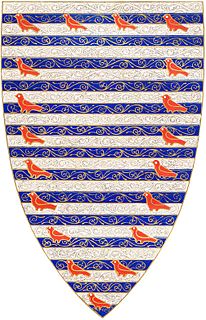
William de Valence, born Guillaume de Lusignan, was a French nobleman and knight who became important in English politics due to his relationship to King Henry III of England. He was heavily involved in the Second Barons' War, supporting the King and Prince Edward against the rebels led by Simon de Montfort. He took the name de Valence after his birthplace, Valence, near Lusignan.
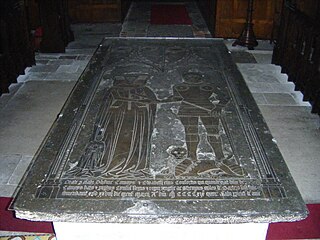
Thomas de Camoys, 1st Baron Camoys, KG, of Trotton in Sussex, was an English peer who commanded the left wing of the English army at the Battle of Agincourt in 1415.
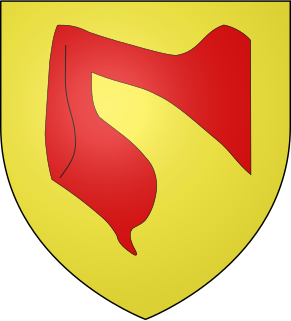
John Hastings, 1st Baron Hastings, feudal Lord of Abergavenny, was an English peer and soldier. He was one of the Competitors for the Crown of Scotland in 1290/92 in the Great Cause and signed and sealed the Barons' Letter of 1301.
Events from the 1430s in England.

Katherine Mortimer, Countess of Warwick was the wife of Thomas de Beauchamp, 11th Earl of Warwick KG, an English peer, and military commander during the Hundred Years War. She was a daughter and co-heiress of Roger Mortimer, 1st Earl of March and Joan de Geneville, Baroness Geneville.
Alice de Toeni, Countess of Warwick was a wealthy English heiress and the second wife of Guy de Beauchamp, 10th Earl of Warwick, an English nobleman in the reign of Kings Edward I and Edward II. He was one of the principal opponents of Piers Gaveston, a favourite of Edward II of England. Alice married three times; Guy was her second husband.
Anne Butler, Countess of Ormond, was the first wife of Irish noble James Butler, 3rd Earl of Ormond, and the mother of James Butler, 4th Earl of Ormond. She was the first countess of Ormond to live at Kilkenny Castle, Ireland.
Maud de Badlesmere, Countess of Oxford was an English noblewoman, and the wife of John de Vere, 7th Earl of Oxford. She, along with her three sisters, was a co-heiress of her only brother Giles de Badlesmere, 2nd Baron Badlesmere, who had no male issue.

Guy de Bryan, 1st Baron Bryan, KG was an English military commander and Admiral.
Henry le Scrope, 1st Baron Scrope of Masham was an English soldier and administrator.

William Willoughby, 5th Baron Willoughby de Eresby KG was an English baron.
Harvey VII of Léon was a Breton lord, son of Harvey VI, Lord of Léon and his wife Joanna of Montmorency. He succeeded his father as Lord of Léon in 1337. He was also Lord of Noyon-sur-Andelle. The Lords of Léon were a junior branch of the Viscounts of Léon which was founded by Harvey I, second son of Guihomar IV, Viscount of Léon. Harvey VII won fame during the War of the Breton Succession.

Hugh Hastings I was an English administrator and soldier. He fought for Edward III in the first phases of the Second War of Scottish Independence and the Hundred Years' War.

Roger la Warr, 3rd Baron De La Warr was an English nobleman.
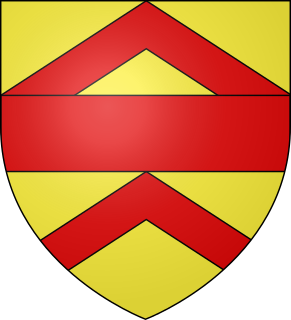
Walter FitzWalter, 3rd Baron FitzWalter was an English soldier and nobleman.
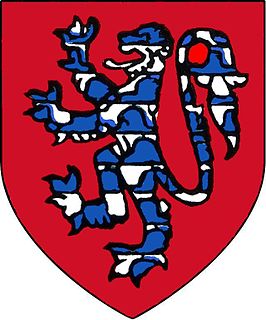
Sir Adam de Everingham, 2nd Baron Everingham, Lord of Laxton, was an English noble who fought during the Second War of Scottish Independence and the Hundred Years' War.

Hugh Hastings III, Lord of Elsing, Brisley and Grimston, was an English soldier and noble who fought in the Hundred Years' War.













